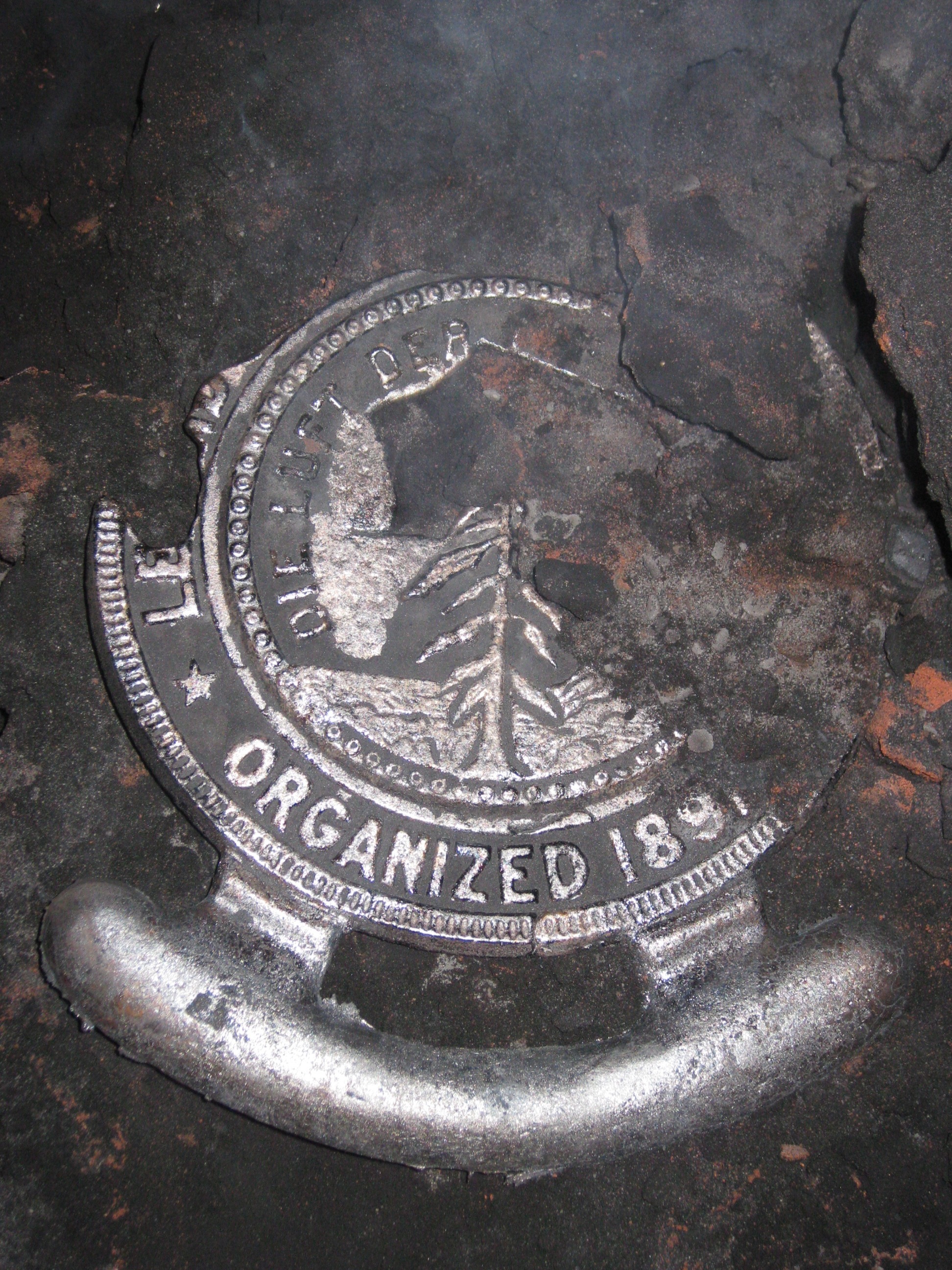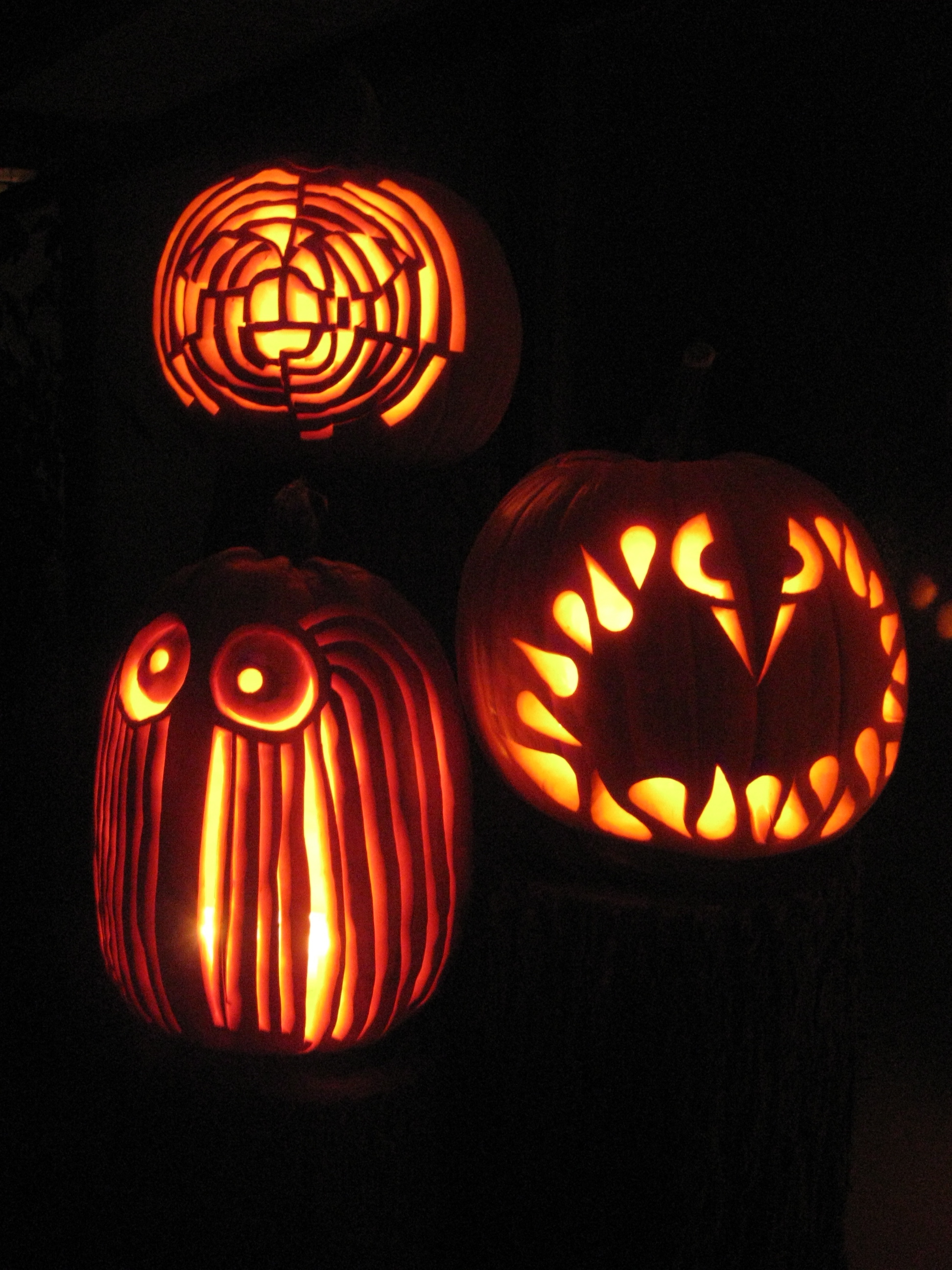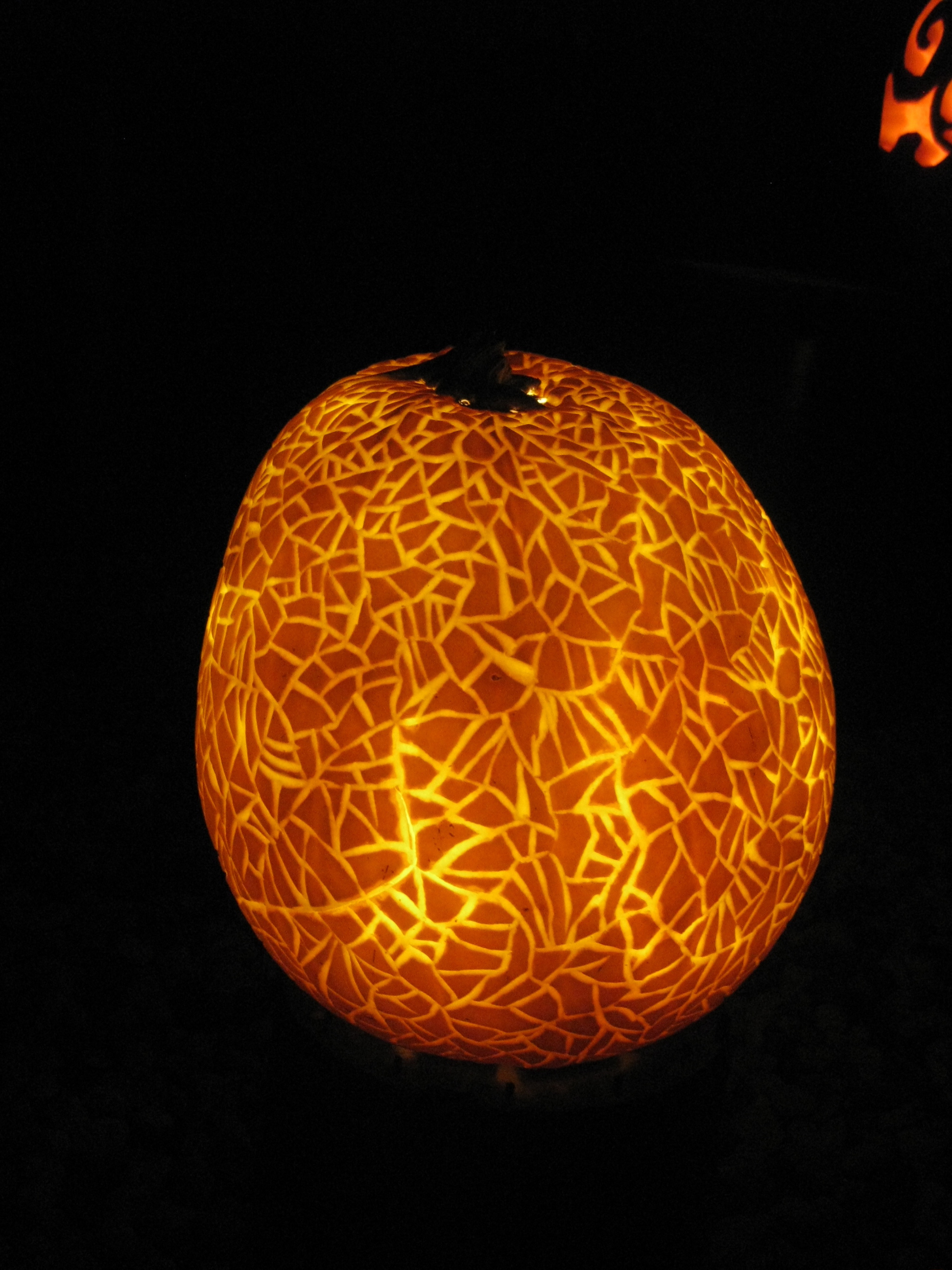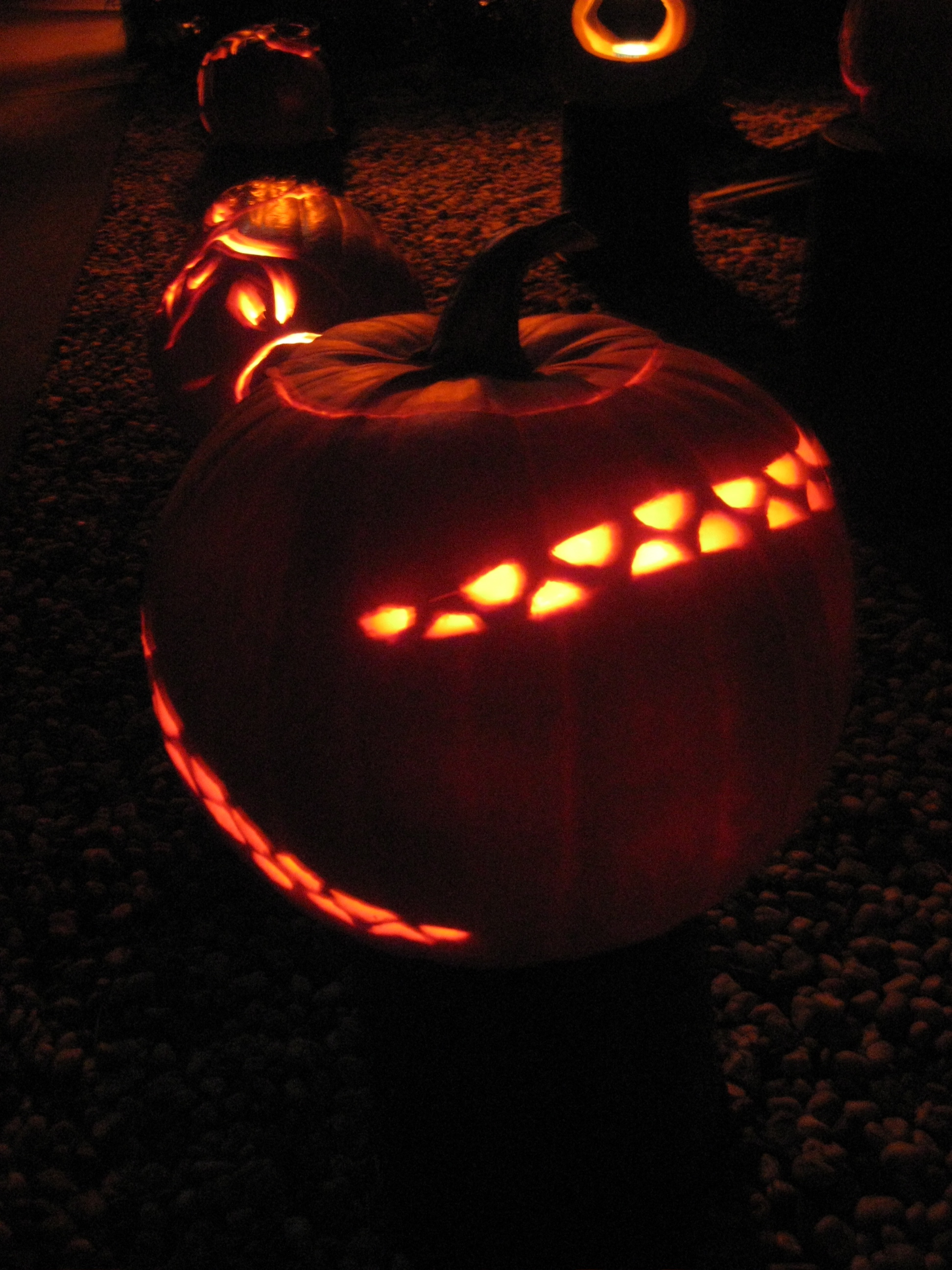The poster is an advertisement for a robot dating service - which is exactly what the characters say. I haven't decided if the robot is offered to humans in need of a companion for the weekend, or if he's looking for a female robot for himself. I don't think it matters.
Read MoreThe N-Lighten Wand
I recently completed a group project for my class Human Values and Innovation in Design. The problem statement was to leverage future technology (coming in 5-15 years) to create new ways to encourage face-to-face interactions amongst teenagers. The problem is tricky: how do you have a device that fosters in-person interaction without becoming a distraction? After performing some ethnography work with teenagers from around the country and a middle school teacher, we settled on a "Magic Wand" inspired by how excited we learned middle school students are when they get to use a Smart Board; essentially a white board with a projection system that allows you to input to a computer - press buttons, write on what's being displayed - with pen-shaped pieces of plastic. In this case, adding a layer of technology enhances an in-person experience rather than detracting from it. I worked with teammates Eric and James to imagine a world in which every student had his or her own wand that could be split up into separate projector and stylus components. The wands would have cameras that take in information, then send it to the cloud for processing.
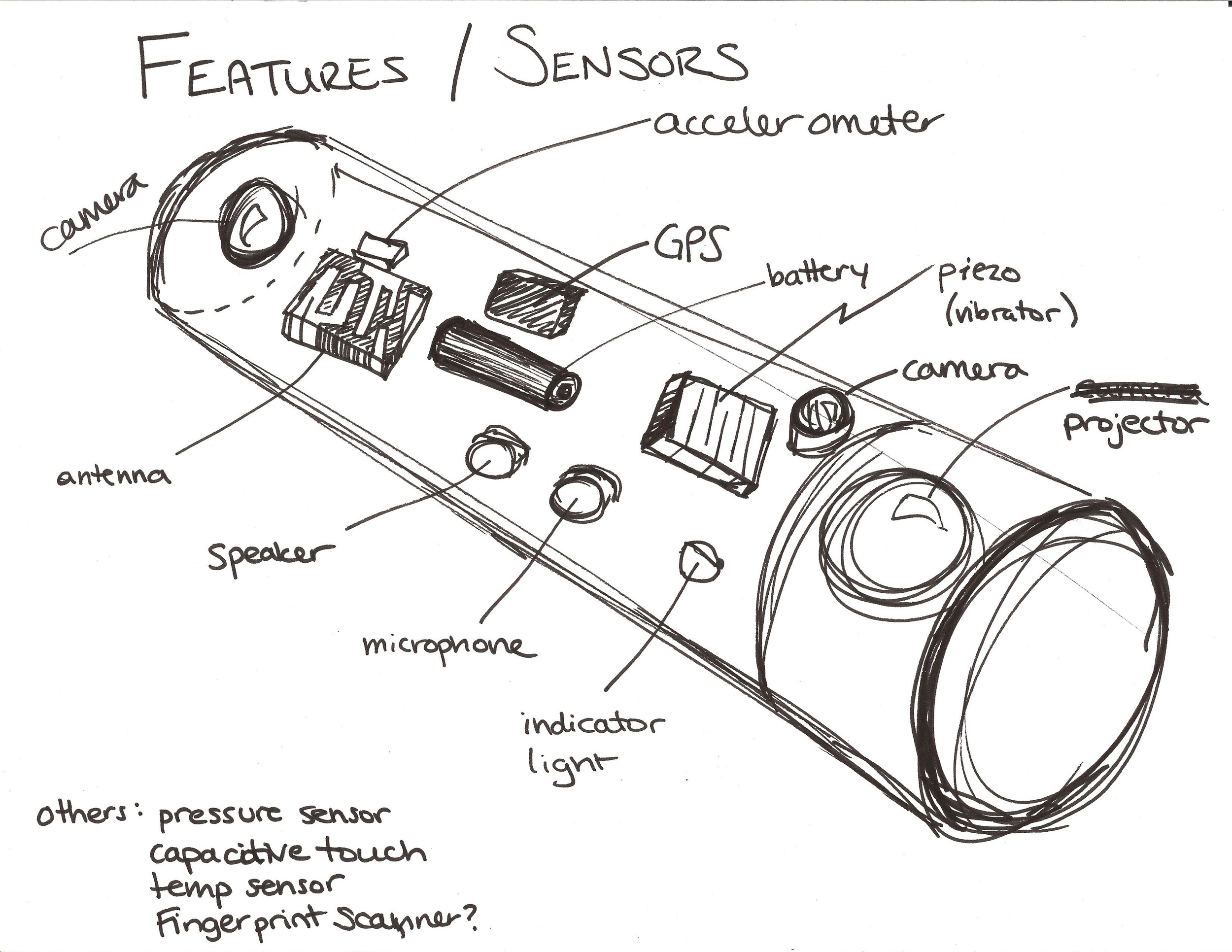
Current projector technology is not yet small or efficient enough to make this device a reality, but the device could be made in the next decade or two.
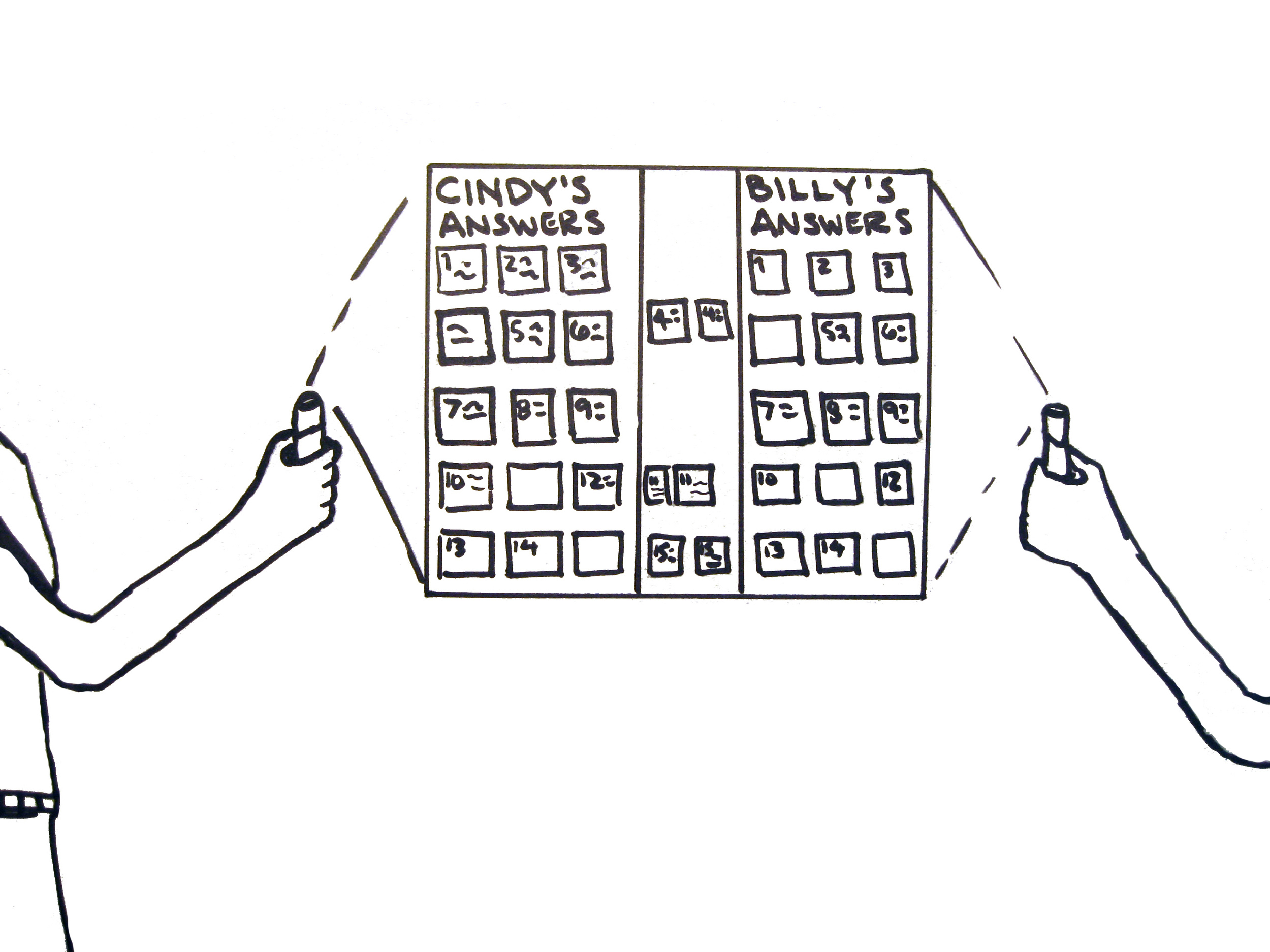
Having to project onto a surface is much less isolating than working on a device with a screen (computer, laptop, phone, etc.). The work surface is larger than a screen, and can also be viewed from any angle. In the sketch above, you can see how two students might compare answers on their math homework: the system detects which questions they have different answers on, and separates them out for closer inspection.
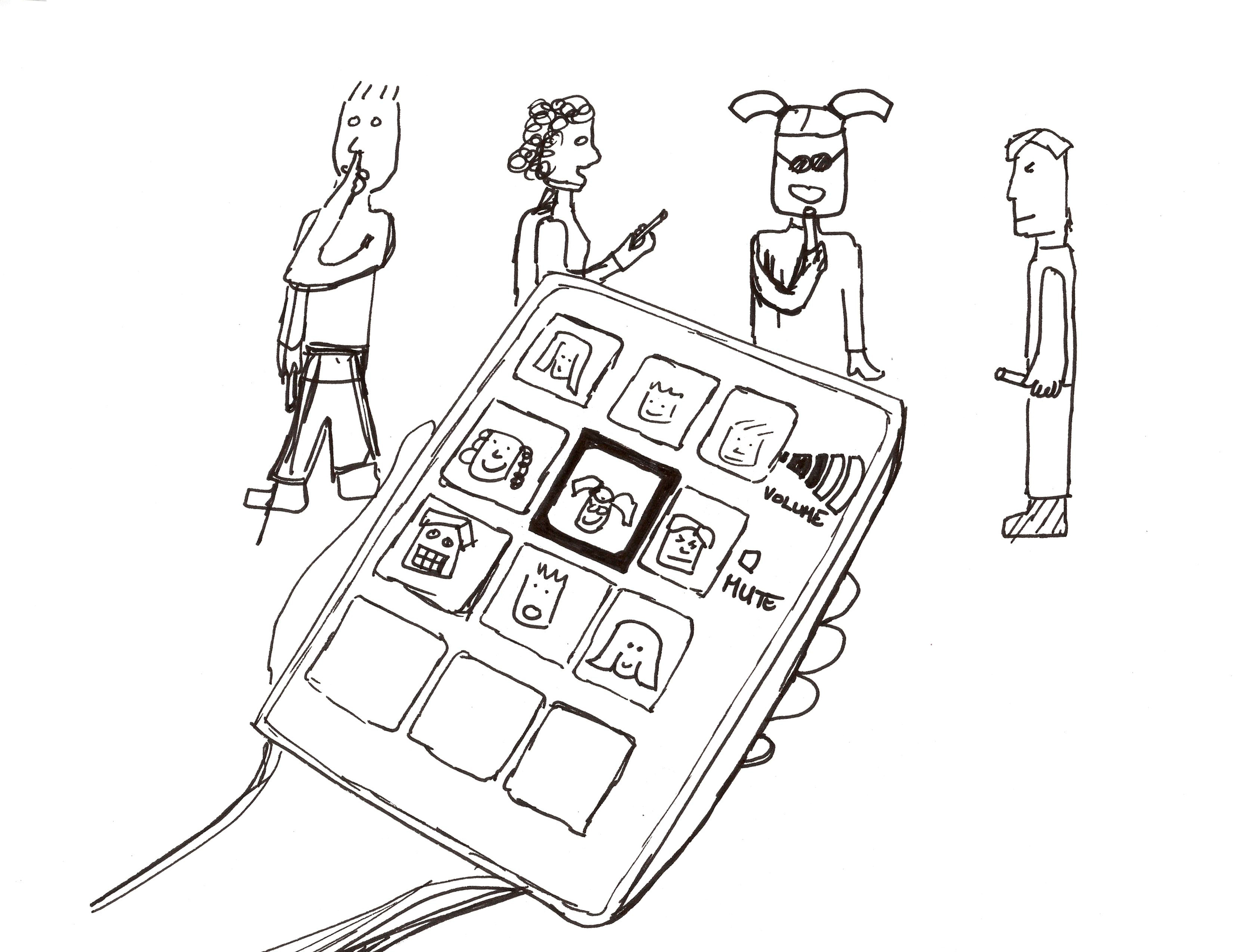
Shown above is the concept of using the wands in the manner of a talking stick, where the students pass around the ability to use their wands as a microphone. The teacher maintains ultimate control over the situation using a screen-based device. The device moves classroom learning from teacher-centric to student-centric, necessitating a whole new model of classroom learning. In order to truly be effective, the entire classroom and homework experience must change.
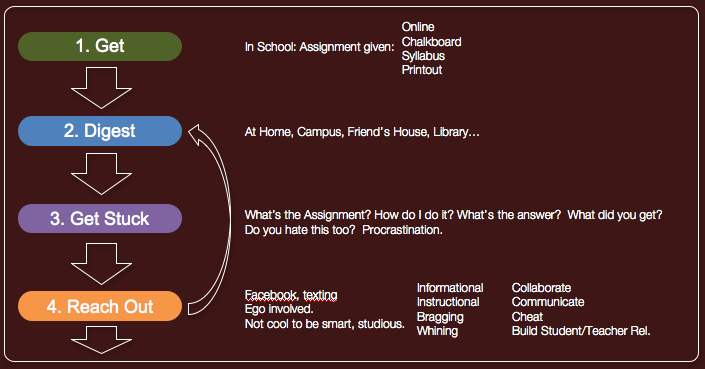
How learning happens in schools today.
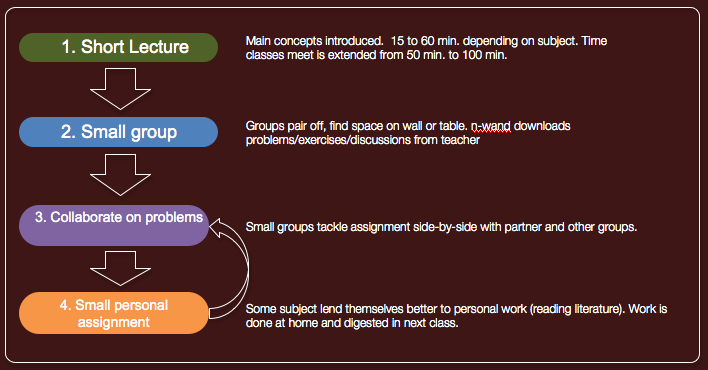
How learning could happen using the N-Lighten Wand.
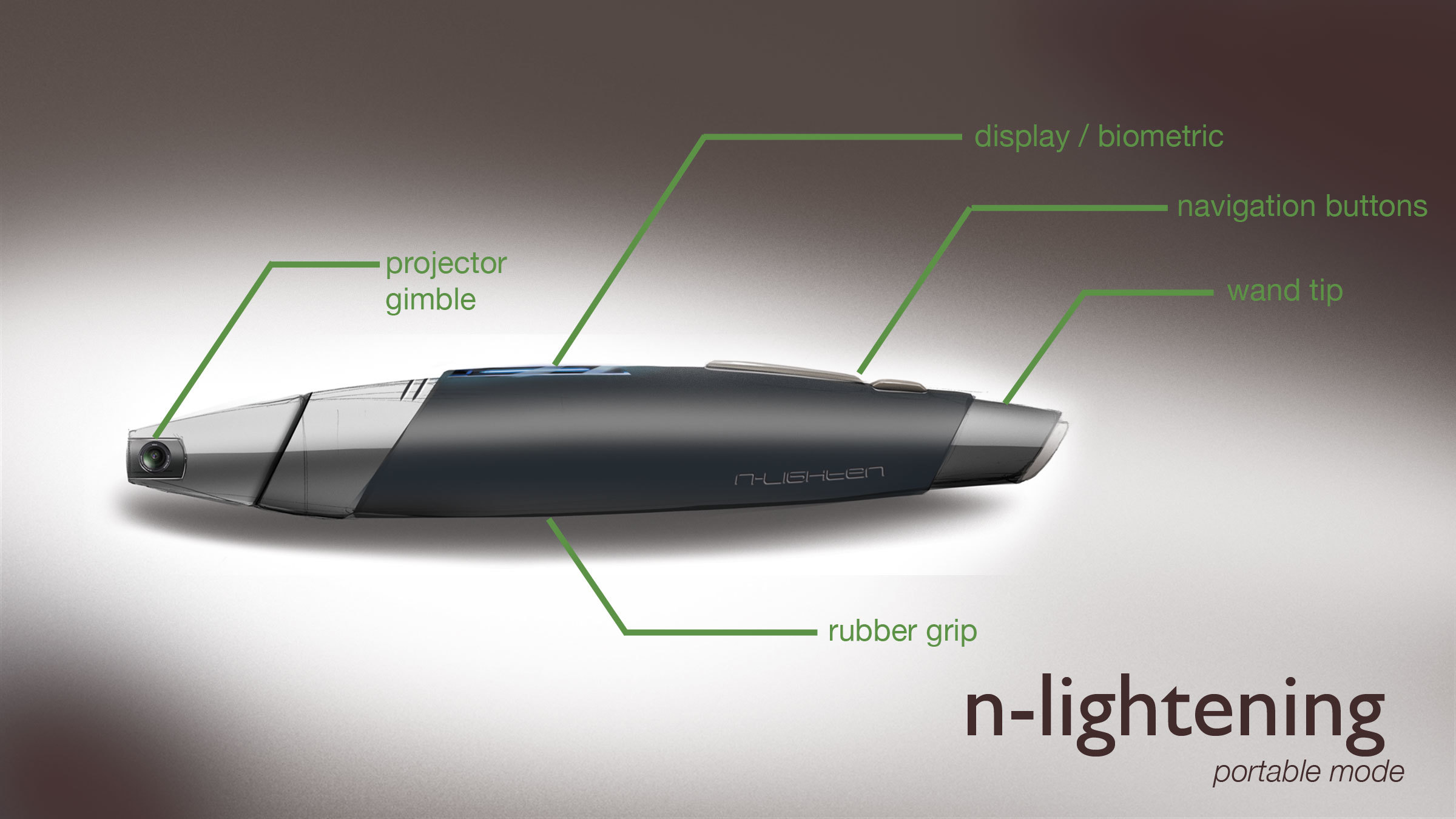
This is how we would envision the wand looking. Students could use the pen in this configuration to do quick projections on a wall or table, but would not be able to input in this configuration.
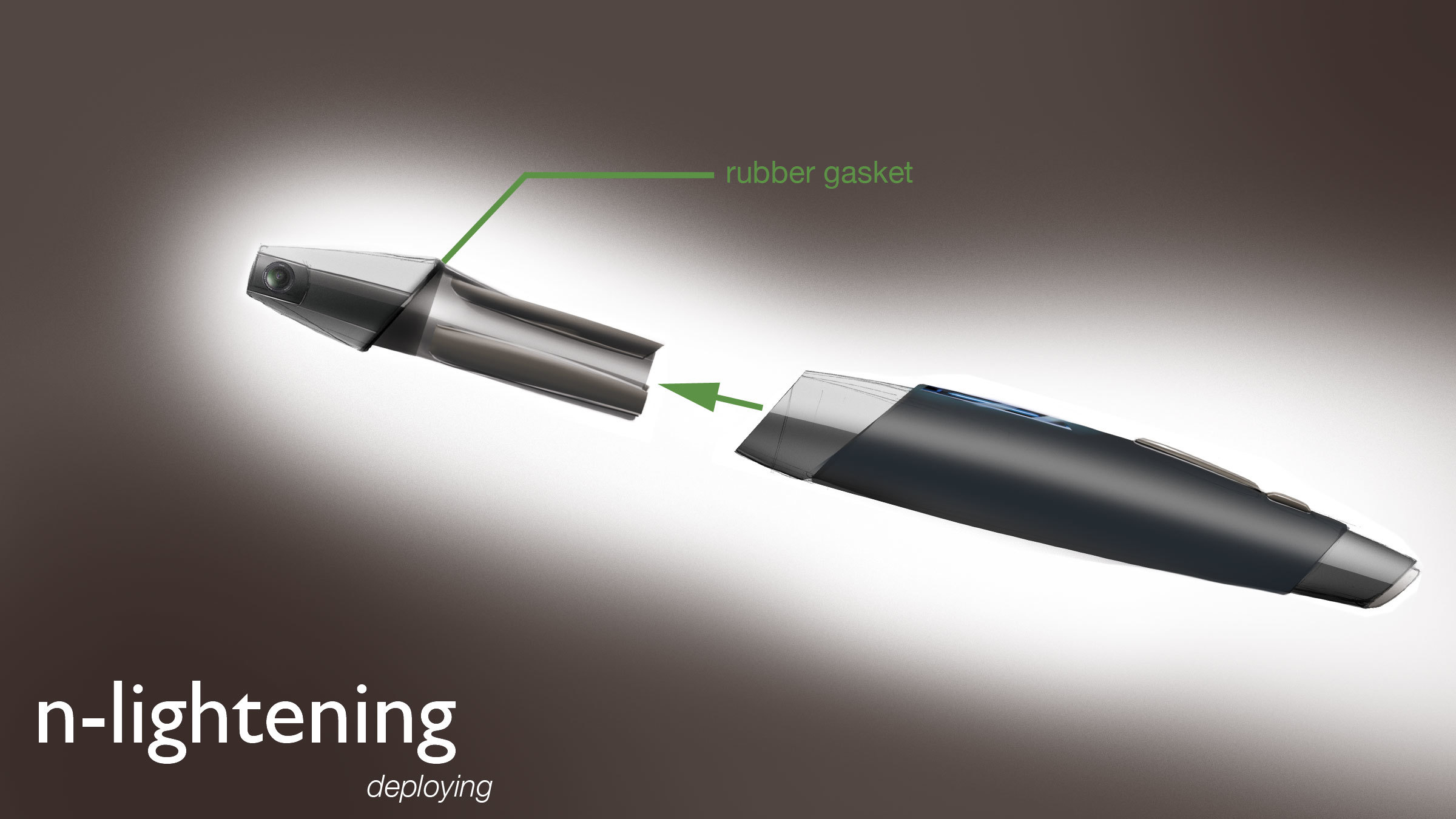
The wand separates into a projector and a stylus. The student can either hold the projector in their hand, or set it down in the tripod configuration shown below.
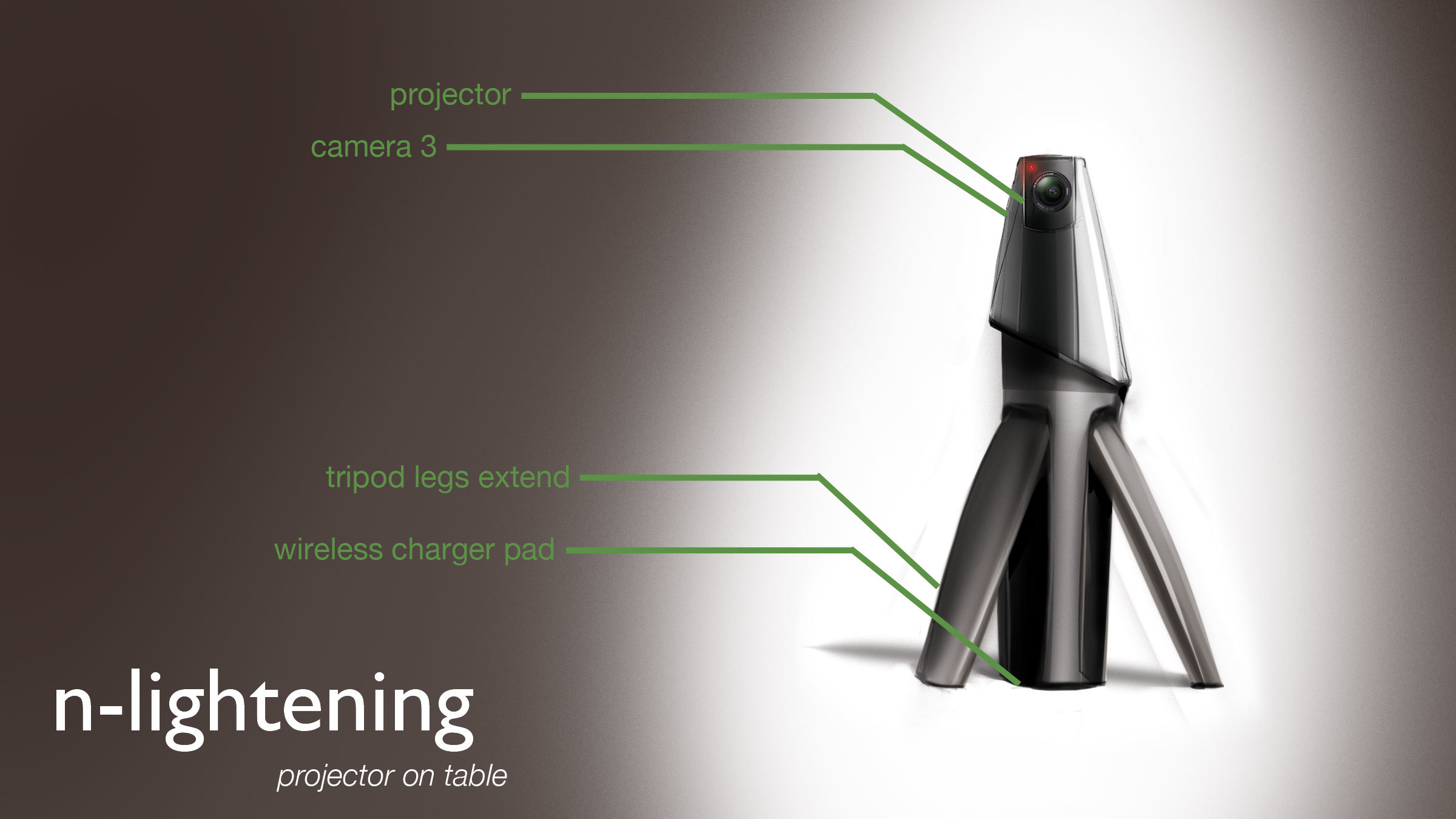
The projector component has a built-in tripod to enable it to rest on a table or other flat surface.
Storyboard sketches drawn by me. All renderings done by my very talented teammate, Eric. Frameworks were a collaborative effort amongst all teammates. Outside consulting with buzamoto.
Marin County
Today I took the day off and left the Palo Alto bubble for an excursion to Marin County, the county just north of San Francisco. It was one of those days that makes you wonder why anyone would ever want to live anywhere else -- a strong endorsement coming from a girl who would move back to Minnesota in a heartbeat. The sun was out and the air was crisp, and the company was entertaining. The final destination of the excursion was Nick's Cove, a fantastic restaurant with some of the best seafood I've ever had. I never would have expected dungeness crab mac 'n cheese to be good, and I've never enjoyed oysters before, but I was pleasantly surprised at how delicious they both were. It was a nice change of pace from the Thai food truck I've been frequenting at school.
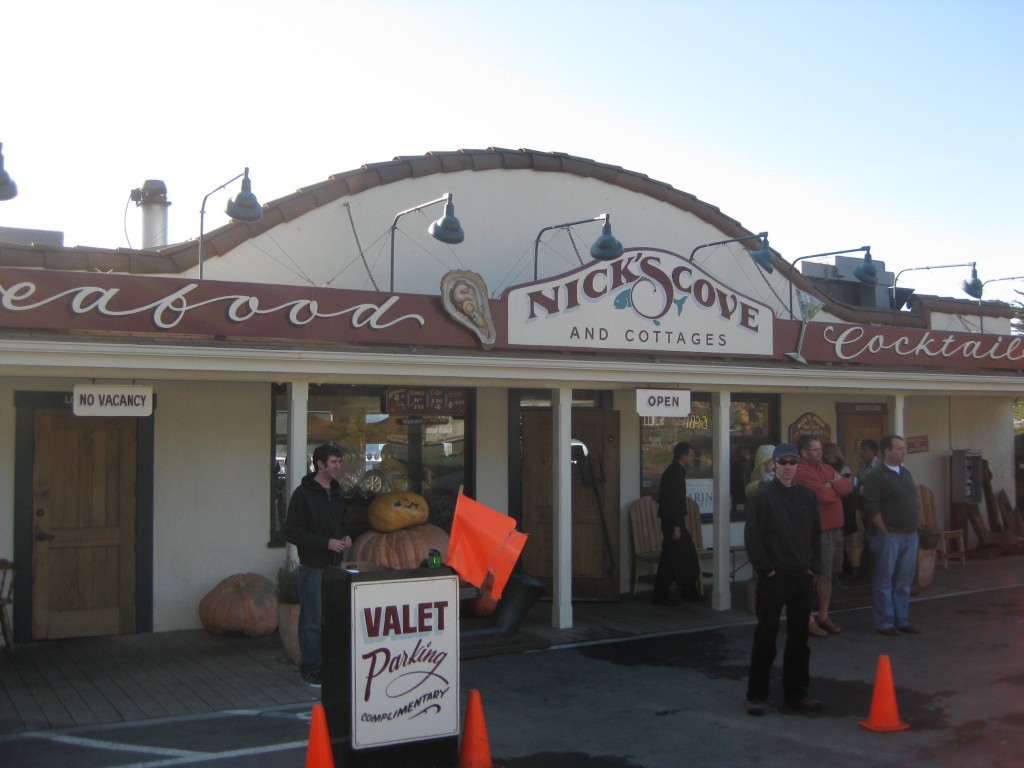
Below is the view from our lunch table. The view for most of our two hour drive was similar, with some cows and rolling hills thrown in. This bay is right over the San Andreas Fault. I'm glad the big one didn't hit while we were eating lunch.
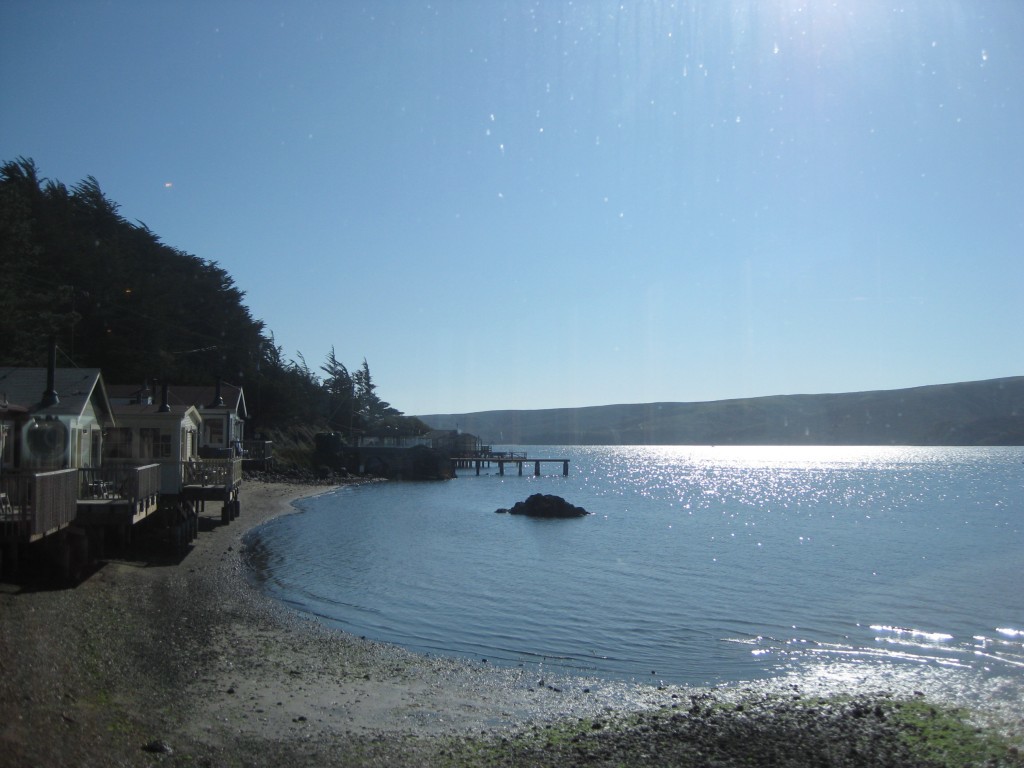
What a lovely Saturday. Tomorrow it's back to work.
Networking
If person has enough determination and an internet connection, they can learn nearly every piece of information that a Stanford student does. The main reason for going to school is because of the people; you have the opportunity to learn from some of the best professors in the world while surrounded by bright and interesting people who are passionate about what they doo. This evening I went to a dinner to give networking a try and work on my schmoozing skills. I ended up having a surprising amount of fun. The event was one of a number of dinners sponsored by the Stanford Entrepreneur Club and held in the living rooms of various graduate students. Each dinner has a focus like sustainable technologies or women in entrepreneurship - the dinner tonight was centered around consumer internet ventures, a topic which I chose purely because it was the only one that fit into my schedule. I ended up with a number of business cards and my number programmed into a few people's iPhones.
My two biggest takeaways from this evening was that there appears to be a need for women in Stanford entrepreneurship -- out of the 13 students, only one other was a woman -- and that I need to hurry up and print a new set of business cards before I do any more dinners like this.
Liu Lecture: Maira Kalman
Tonight was the first in this year's series of Liu Lectures, a series of design speakers invited to Stanford to both give a lecture open to all Stanford students and community members, and to a private dinner for JPD students. They are held in memory of David H. Liu, who passed away while a student in the JPD. Each year a new student has the honor of being in charge of coordinating the speaker visits, a TA position that is generously funded by the Liu family. Can you imagine a better job than getting to invite your idols to come talk? This year's chair, David Goligorsky, has done a fabulous job with the fall lineup, beginning with tonight's speaker, Maira Kalman. Even if you don't recognize her name, you should be familiar with her work if you read the New York Times or The New Yorker on a regular basis. One of her most famous covers is shown below.
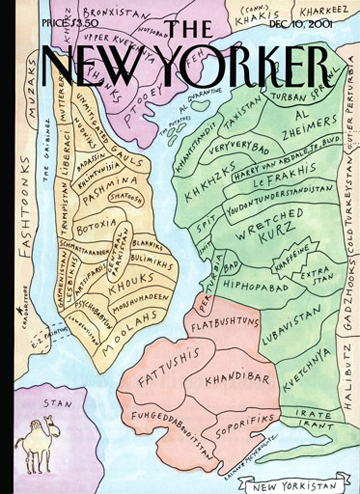
Maira was a fantastic speaker - very engaging and funny, with a dry sense of humor. My favorite tidbit from tonight came over our dinner discussion. For her work, Maira finds inspiration in the pictures she takes. To catalogue her thousands of photos, she uses an organization system different from any I have encountered before; instead of folders like "Bermuda 2009" or "Johnny's Birthday," she uses names like "Women Wearing Green Skirts Looking Sad" or "Men in Hats Looking Thoughtful." Great minds really do think differently.
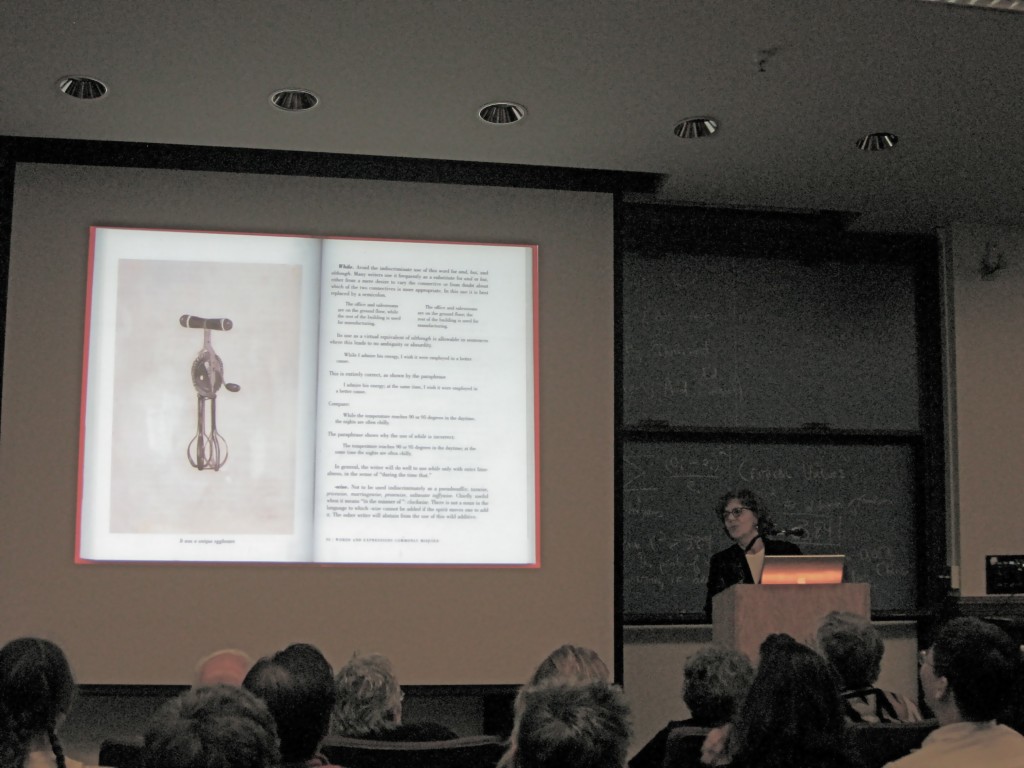
This slide is an excerpt from Maira's illustrated version of The Elements of Style. She explained how thrilled she had been that the authors had had such a great sense of humor, and had thought to include objects like egg beaters in their examples - one of her favorite things to draw. I would have enjoyed this book a lot more in high school if my version had been illustrated.
Halloween
Last night I took part in one of the greatest traditions in the Stanford art community: carving a pumpkin for display at the house of the legendary professor Matt Kahn. This is an annual event he has been holding for decades. Dozens of pumpkins carved by my fellow Art 60 students and alumni of the class line Matt's driveway, with his pumpkins nestled by the entrance to his Eichler-style home, a museum crammed full of beautiful pieces he has collected throughout his lifetime. Much of this artwork is from indigenous artists around the world and serves as inspiration in his artwork, especially those of the pumpkin variety.
The three pumpkins show above are Matt's. He guest lectured for one of our Art 60 classes, teaching us the importance of repetition, patterns and negative and positive spaces in design. He also emphasized the importance of knowing one's materials; you must design for a curved surface and leave air holes, unless you plan to use LED lighting as was the case in the spectacular pumpkin shown below (I'm not sure whose carved this piece).
For my pumpkin I chose to go with a sea creature theme, settling on a tentacle-wrapped pumpkin. It's been years since I've carved a pumpkin. I don't think I'll approach this activity in the same way ever again.
Coffee Cup Cosy
This week's assignment for Art 60 was to make a "gratifying object": something that makes you feel happy to hold. In preparation for making this object, I needed to go out and spend time carefully feeling at least 100 objects and document this exploration process in my lab notebook. After some thought, I decided to use my favorite texture as a child, the ruffle on my stuffed clown, as an inspiration for my object. I wanted to create an adult version of the sensation of the ruffles between my fingers. I explored many fabric options, finding my final choices at Austin's Silk Road Fabrics, place specializing in exquisite fabrics. I was overwhelmed by my options, but managed to narrow it down to a few final contenders.
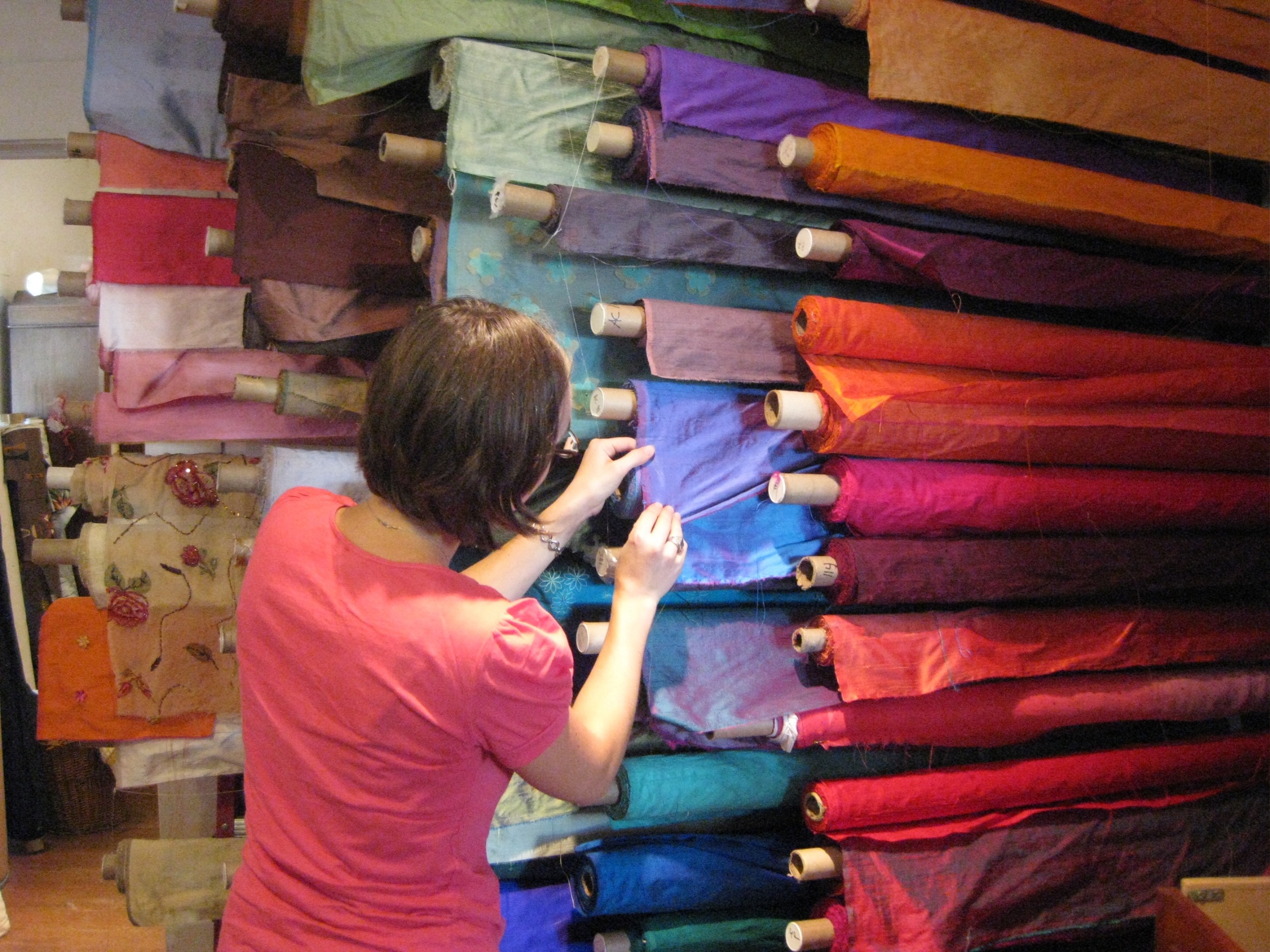
After much trial and error (and good bit of sewing advice from my mom) I ended up with the coffee cup cosy shown below. It has four layers: an inner layer that stretches tight around the cup, a polar fleece layer for cushion and a lining layer to allow the top layer of silk to move freely. The "handle" is not structural, but meant to make the back of your hand feel nice, too. The ruffles are a nod to the stuffed clown I had as a child.
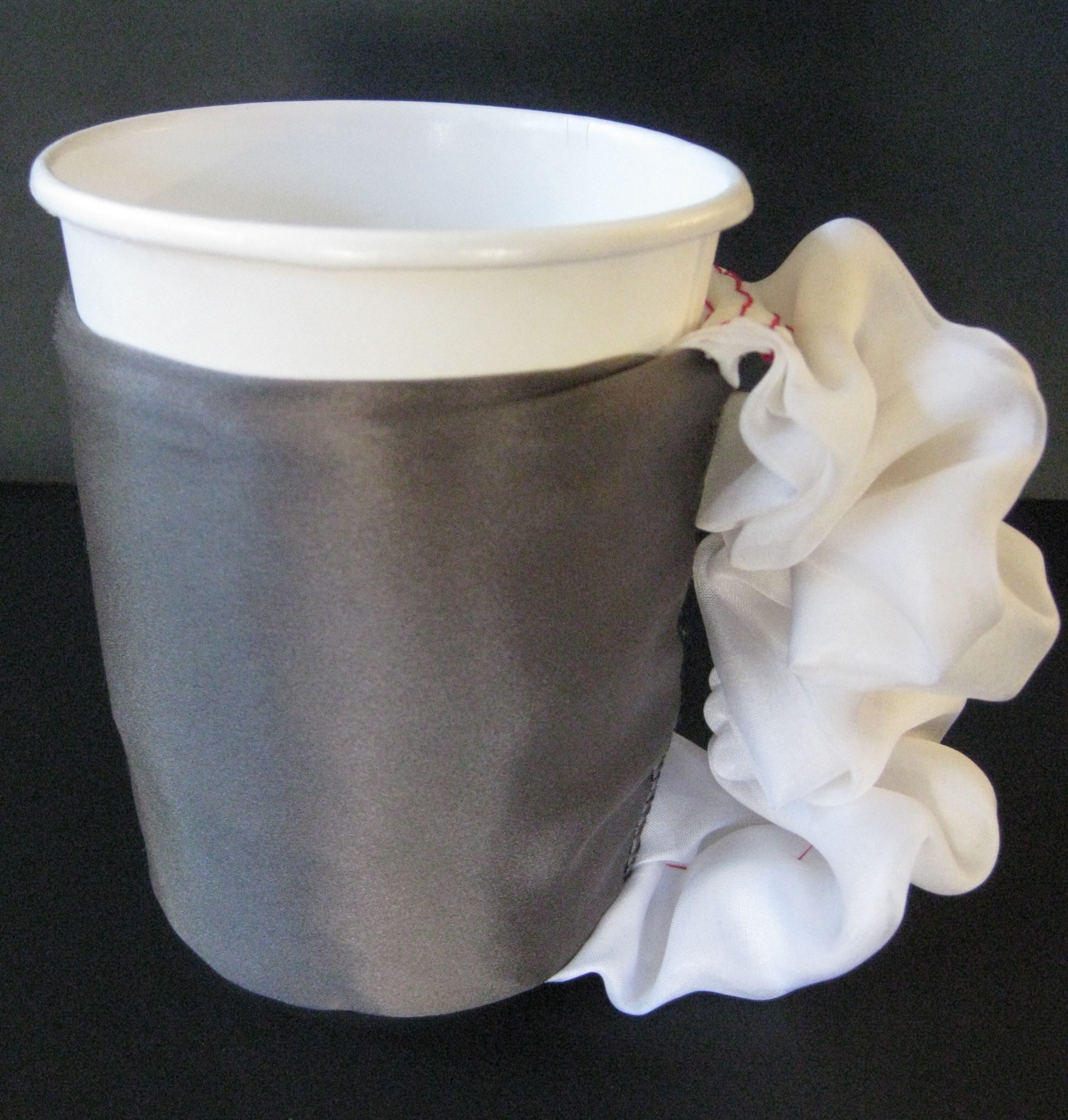
Chance Encounters
I'm spending this weekend in Austin for a family wedding. On the plane ride here, I was discussing a class project with my companion. We were discussing how to apply technologies that will be ready in the next five to ten years - cloud computing, miniature projectors, etc. - to the issue of how teens collaborate in-person. As I was sketching out some of the possibilities, the man in the aisle seat couldn't help but interrupt and tell me all about his experience fostering collaboration among various branches of government in Oregon in order to streamline processes and save the taxpayers money. I got some great ideas for what the most difficult issues are for sharing among different people, and what questions are waiting to be answered. I can't imagine a better vocation than listening to what people have to say - problems they express, needs they themselves don't even realize they have - and using my engineering skills and creativity to find a solution. Final prototypes to come later this week.
Molten Metal
ME 203, the manufacturing and design class I'm taking, has weekly four-hour lab sections during which you learn one new process. By the end of the quarter each student has a few small projects, including a welded cube, a Stanford seal made of bronze and a simple magnifying glass. The purpose of these projects is to teach you how to mill, turn (on a lathe), weld, sand blast, and many other useful building skills. The first couple of sessions were mainly review, since I spent countless hours in MIT's Pappalardo Lab making robots and oil filter spinners among many other things. This week's lab of sand casting, however, was 100% new to me. Sand casting is so much more exciting to watch than the slow, meticulous machining processes I have used in the past. There is also a lot more heavy lifting involved, and you get a lot dirtier.
The first step is creating the mold itself. There are two resin forms: one for the front half of the seal and one for the back half. You tightly pack layers of powder, new (red) sand, then old (blackened) sand around the forms, then remove them and use a bellows to blow out stray bits of sand.
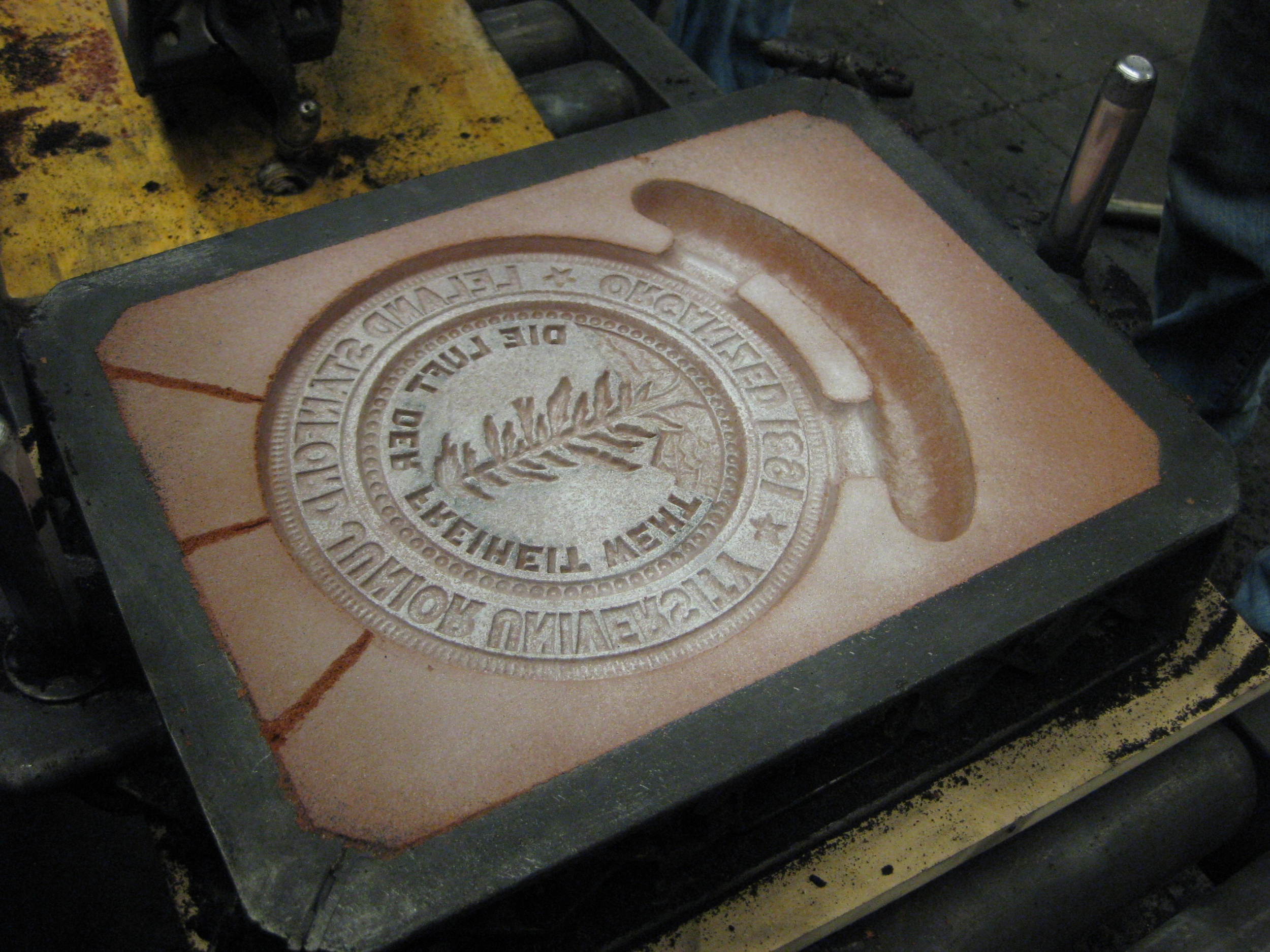
Next, you wait until the metal is hot enough to pour. In our case, that was 2020 degrees Fahrenheit. In order to measure how hot the metal is, you need a special temperature probe that can withstand the heat - or not, as was the case when one of ours burned off in the crucible.
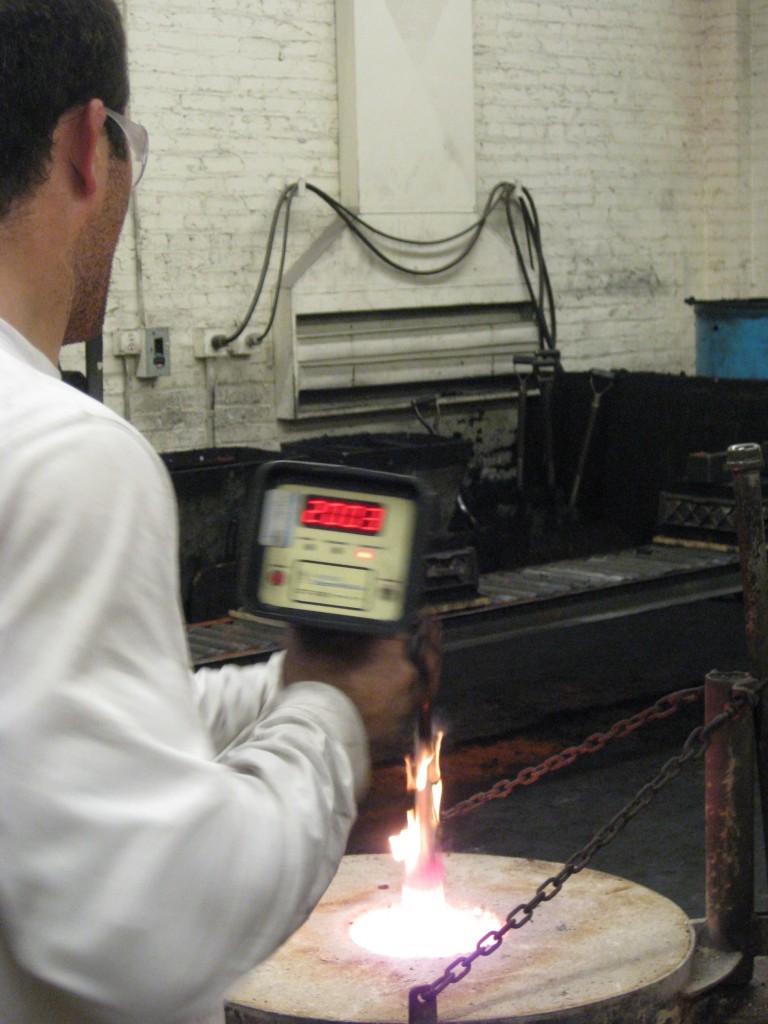
In order to even get close to the crucible of metal at that point, you need to wear heat reflective clothing. I thought these looked pretty cool.
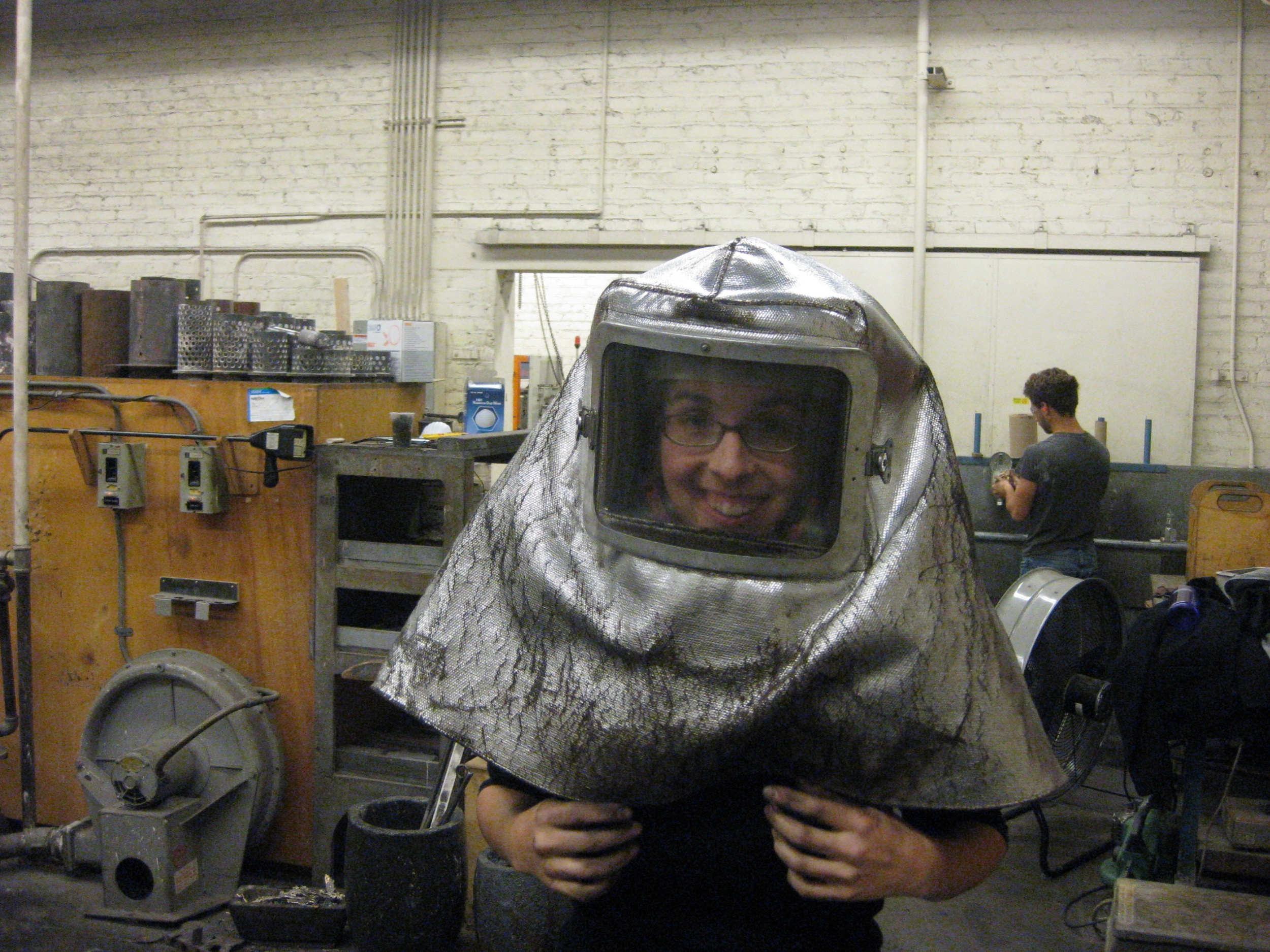
Once the metal was ready for pouring, our TAs kicked us all out of the room and went down the line, rationing out the molten metal to our line of waiting molds.
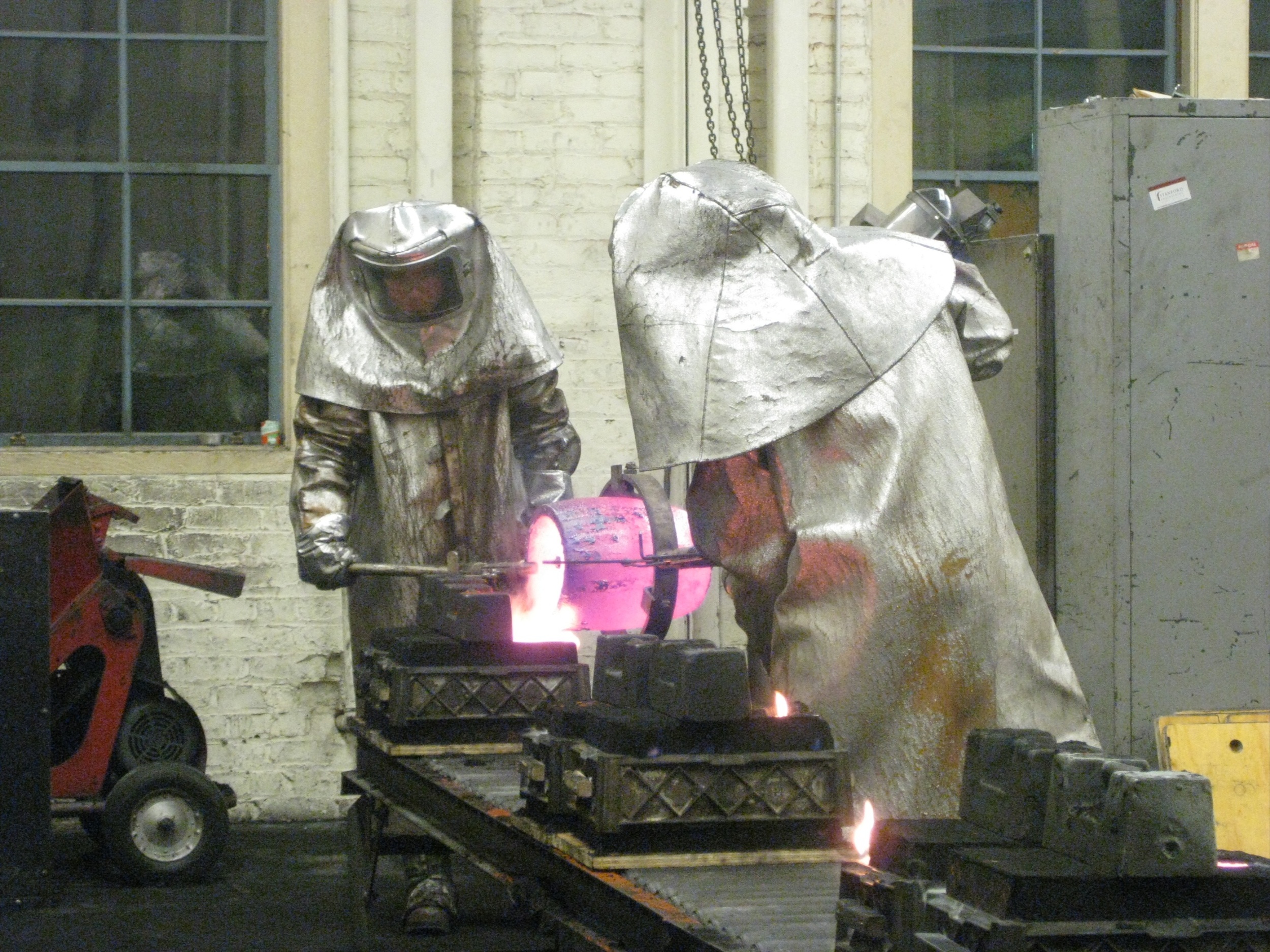
Unfortunately, my mold was at the very end of the row. A couple of other molds were too leaky, meaning that they ran out of metal part way through mine. I'm not too sad about this, since I don't have much use for a 5-pound piece of brass, but I was disappointed that I didn't get to see how well my mold held up.
